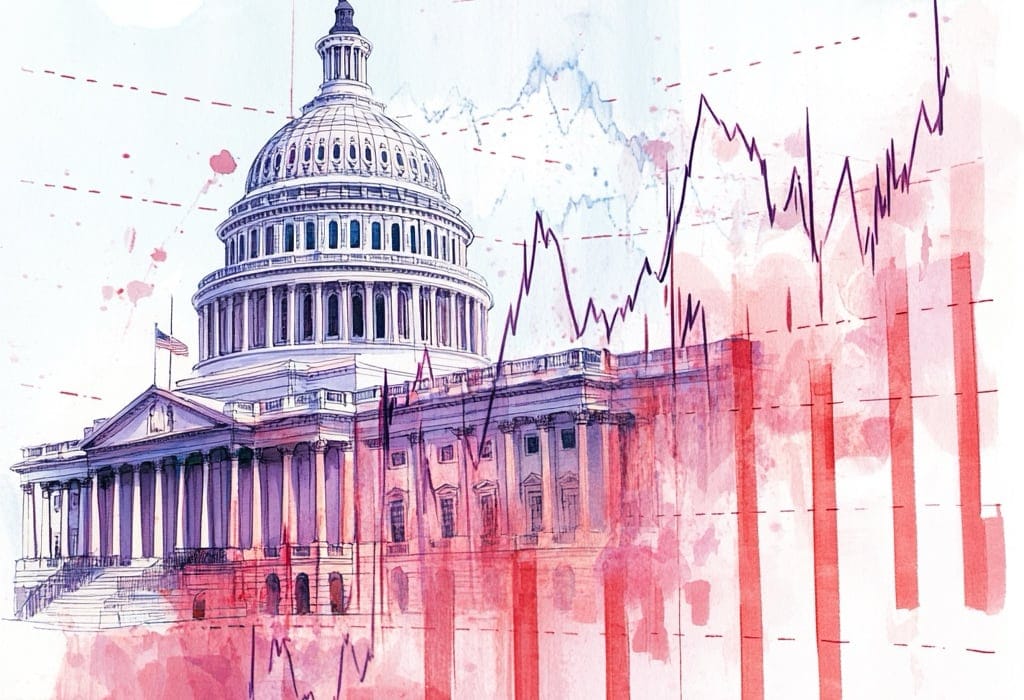Trump's Economic Vision: Short-term Boosts and Potential Downfalls

Disclaimer:
This analysis is generated by Qwen2.5, an AI model operating on a MacBook Pro. The insights provided are based on the data available at the time of writing and are intended for informational purposes only, not as professional financial, legal, or investment advice.
Using an AI model like this helps to ensures an objective, unbiased outlook, free from emotions and personal influences.
Trump's economic plan could have both positive and negative effects on the stock market. Let’s break down these potential impacts:
Positive Impacts
- Tax Cuts: Trump's proposal to extend tax cuts and introduce some new ones could boost corporate profits. Lower taxes mean more disposable income for consumers, which can increase demand for goods and services, supporting company earnings.
- Economic Growth: In the short term, Trump’s plan could stimulate economic growth through increased consumer spending and business investment. This would likely attract investors, driving up stock prices.
- Tariffs: By increasing tariffs on imports, Trump's plan aims to protect domestic industries and make American products more competitive. While this could hurt some businesses reliant on imported goods, it might benefit industries producing domestically and boost their stocks.
Negative Impacts
- Budget Deficits: Extensive tax cuts without corresponding spending reductions can lead to higher budget deficits. Concerns over long-term fiscal sustainability could weigh on the stock market, especially as investors seek certainty in company earnings and government programs.
- Inflation: Higher tariffs and reduced immigration could lead to price increases, which would reduce consumer spending power and corporate margins. If inflation rises significantly, it could pressure the Federal Reserve to raise interest rates more aggressively or for longer periods, which negatively impacts stock valuations.
- Trade Tensions: Increased tariffs and aggressive trade policies could lead to retaliatory measures from other countries, which might hurt multinational corporations with overseas exposure. This uncertainty and potential for trade wars can lead to volatility in the stock market.
- Labor Shortages: Restricting immigration could exacerbate labor shortages, especially in sectors heavily reliant on immigrant workers. This could increase wage pressures and reduce profit margins for companies, which may not be favorable to investors.
Stock Market Implications
During the unveiling of such a plan, there could be an initial reaction in anticipation of short-term benefits. The market might see increased valuations for companies expected to benefit directly from tax cuts and protectionist policies. However, over the longer term, persistent inflationary pressures could drive up interest rates and reduce liquidity in the market.
The stock market may also react to signs of economic strength or weakness that could arise from these policies. During Trump's first term, market performance was mixed but generally positive due to tax cuts and deregulation. However, trade tensions with China had periods of uncertainty which affected market sentiment.
Overall, while the initial reaction might be positive due to expected economic stimulus and corporate tax cuts, there could also be significant risks associated with higher budget deficits, potential trade wars, and inflationary pressures that might negatively affect market performance over the medium to long term.
Timeline of Trump's Economic Plan: When Negative Impacts Will Be Visible to the Average American
The timeline for when the negative impacts of Trump's economic plan become clearly visible to the average American would vary based on several factors, including how quickly different policies are implemented and their immediate effects. Here’s a general timeline of potential impacts:
Short-Term (1-2 Years)
- Tax Cuts and Initial Stimulus: Immediate effects of tax cuts would likely increase disposable income, potentially boosting consumer spending. This could create a short-term economic boost.
- Initial Tariff Impacts: Higher tariffs on imports may cause initial price increases, but the full impact might not be immediately visible due to supply chain adjustments and inventory levels.
Medium-Term (2-3 Years)
- Budget Deficits: As the impact of tax cuts becomes more pronounced without corresponding revenue measures, budget deficits will likely increase. This might not be immediately visible but could start to affect government spending priorities and public perception of fiscal health.
- Inflationary Pressures: If tariffs lead to higher import prices and reduced immigration leads to labor shortages, this could start contributing to inflationary pressures. Consumers might notice higher prices for goods and services.
- Interest Rates: As the Federal Reserve responds to inflation, interest rates may rise. This would make borrowing more expensive and could affect mortgage rates and consumer spending.
Long-Term (3-5 Years)
- Impact on Employment: Restrictions on immigration could lead to a tighter labor market, making it harder for companies to fill jobs. This might not be immediately apparent but could contribute to higher wages and potential labor shortages in certain sectors.
- Fiscal Sustainability Concerns: Ongoing high deficits could lead to concerns about fiscal sustainability, potentially affecting government spending on public services and programs.
- Trade Relations: Persistent trade tensions could result in retaliatory measures from other countries. This might affect American companies operating abroad, potentially leading to job losses and reduced corporate profits.
The visibility of these impacts could also depend on communication and media coverage. For example, rising prices for consumer goods might be more immediately noticeable to the average American than changes in immigration policies. Moreover, the stock market's reaction to these economic developments could influence consumer confidence and spending behavior.
In summary, while some effects like higher prices might be noticeable within the first few years due to tariffs and inflationary pressures, other impacts like fiscal deficits and changes in immigration policies could take longer to fully manifest and be recognized by the average American.



